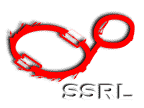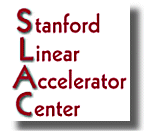| Recent
Advances in Medical Applications of Synchrotron Radiation Stanford Synchrotron Radiation Laboratory March 4-5, 2002 Program Director: Edward Rubenstein |
| Keith Hodgson |
| James Rubenstein |
| Katsuhito Yamasaki |
| Helene Elleaume |
| Giuliana Tromba |
| Wolf-Rainer Dix |
| Kazuki Hyodo |
| Barton Lane |
| William Thomlinson |
| Hiroshi Sugiyama |
| < font face="Verdana, Arial, Helvetica, sans-serif" size="2">Joseph Roberson |
| Masami Ando |
| John Kinney |
| Avraham Dilmanian |
| Dean Chapman |
| Zhong Zhong< /font> |
| Brenda Laster |
| Roman Tatchyn |
| Pau l Csonka |
|
Contrast
Agent Enhanced Radiotherapy
H. Elleaume, J. F. Adam, A. Joubert, S. Corde, A. M. Charvet, J. F. Le Bas, J. Balosso, F. Estève |
| In conventional
radiotherapy, the treatment of brain tumours is a delicate challenge
because it is difficult to deliver a high therapeutic radiation dose
to the tumour, without exceeding the surrounding healthy tissues tolerance.
Norman a
nd co-workers [1, 2] proposed a new approach to obtain a high
X-rays dose inside the tumour while sparing surroundings tissue. A
contrast agent (iodine or gadolinium) is injected intravenously; it
will accumulate in the tumour interstitium if the blood brain barrier
is disrupted. The tumour irradiation takes then place by means of
a conventional scanner (X-rays of weak energy 50-100 keV). The increase
of dose deposit in the
tumour, with regard to healthy tissues, results
from the combination of two effects: The contrast agent accumulation in the tumour, after blood brain barrier breakdown, leads to dose enhancement due to photoelectric effect on the iodine atoms [3]. The irradiation geometry: the beam dimensions are fitted to the tumour size and the radiotherapy is made in tomographic mode, the tumour bein g located at the center of rotation [4]. The X-rays stemming from a synchrotron source are ideal for this kind of treatment, because one can easily tune a quasi-monochromatic beam to the optimal energy, providing the best compromise between an important photoelectric effect and an acceptable dose to the surrounding tissues. We first made in vitro measurements for assessing the dose enhancement according to the iodine concentration and the radiation energy. We estimated the cyto-toxicity effect of synchrotron x-rays on cellular survival (SQ20B cells) with or without iodinated contrast agent. A study was then undertaken on rats bearing a brain tumour (F98 model) to optimise the injection parameters. The contrast agent uptake of the tumour is a key issue with this method. The aim was to obtain the hig hest contrast agent concentrations for the overall irradiation time. A first radiotherapy trial was then attempted on a series of rats. All control untreated animals died 12 days after tumour implantation. The rats, which received synchrotron therapy and the contrast agent infusion, showed the longest lifetime. This preliminary result on a short series is very encouraging. Many parameters remain to be s tudied and optimised: The beam characteristics will be improved (geometry and energy bandwidth) to reduce the irradiation time. We will try to improve the contrast agent uptake with medical drugs susceptible of increasing blood brain barrier permeability. [1] Norman A, Ingram M, Skillen RG, Freshwater DB, Iwamoto KS, Solberg T. X-Ray Phototherapy for canine brain masses, Rad iation Oncology Investigations 1997; 5; 8-14. [2] Rose HT, Norman A, Ingram M, Aoki C, Solberg TD, Mesa A. First radiotherapy of Human metastatic brain tumors delivered by a computerized tomography scanner (CTRx). Int. J. Radiation Oncology Biol. Phys. 1999; 45(5); 1127-1132. [3] Mello R, Callisen H, Winter J, Kagan AR, Norman A. Radiation Dose enhancement in tumors with iodine. Med . Phys. 1983; 10 (1); 75-78. [4] Iwamoto K, Norman A., Kagan A.R., Wollin M., Olch A., Belotti J., Ingram M., Skillen R.G. The CT scanner as a Therapy machine. Radiotherapy and Oncology 1990; 19; 337-343. |



